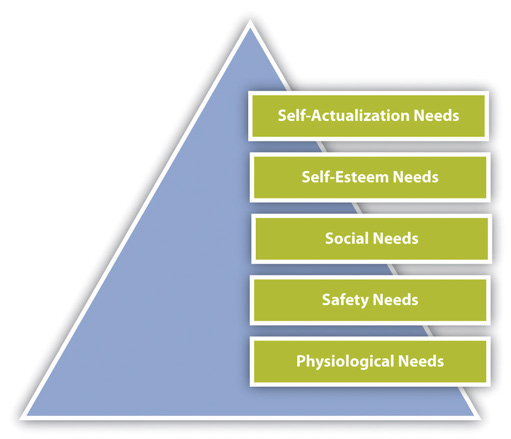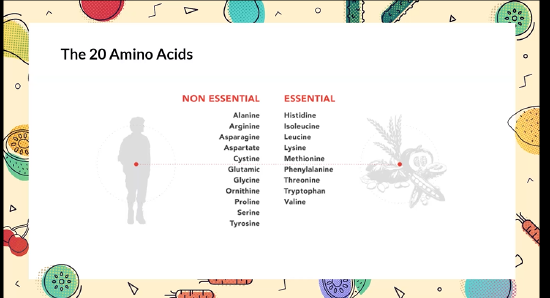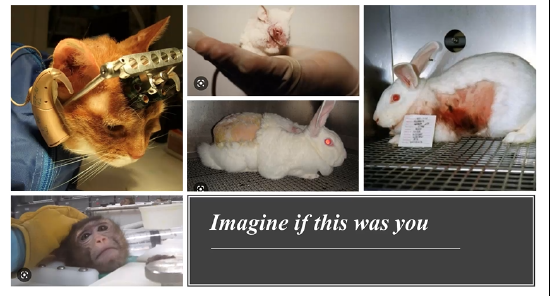10.2: Persuasive Speech Strategies
- Last updated
- Save as PDF
- Page ID
- 135715

- Anonymous
- LibreTexts
Learning Objectives
- Identify common persuasive strategies.
- Explain how speakers develop ethos.
- Explain how speakers appeal to logos and pathos.
- Explain how cognitive dissonance works as a persuasive strategy.
- Explain the relationship between motivation and appeals to needs as persuasive strategies.
Do you think you are easily persuaded? If you are like most people, you aren’t swayed easily to change your mind about something. Persuasion is difficult because changing views often makes people feel like they were either not informed or ill informed, which also means they have to admit they were wrong about something. We will learn about nine persuasive strategies that you can use to more effectively influence audience members’ beliefs, attitudes, and values. They are ethos, logos, pathos, positive motivation, negative motivation, cognitive dissonance, appeal to safety needs, appeal to social needs, and appeal to self-esteem needs.
Ethos, Logos, and Pathos
Ethos, logos, and pathos were Aristotle’s three forms of rhetorical proof, meaning they were primary to his theories of persuasion. Ethos refers to the credibility of a speaker and includes three dimensions: competence, trustworthiness, and dynamism. The two most researched dimensions of credibility are competence and trustworthiness (Stiff & Mongeau, 2003).
Competence refers to the perception of a speaker’s expertise in relation to the topic being discussed. A speaker can enhance their perceived competence by presenting a speech based in solid research and that is well organized and practiced. Competent speakers must know the content of their speech and be able to effectively deliver that content. Trustworthiness refers to the degree that audience members perceive a speaker to be presenting accurate, credible information in a nonmanipulative way. Perceptions of trustworthiness come from the content of the speech and the personality of the speaker. In terms of content, trustworthy speakers consider the audience throughout the speech-making process, present information in a balanced way, do not coerce the audience, cite credible sources, and follow the general principles of communication ethics. In terms of personality, trustworthy speakers are also friendly and warm (Stiff & Mongeau, 2003).
Dynamism refers to the degree to which audience members perceive a speaker to be outgoing and animated (Stiff & Mongeau, 2003). Two components of dynamism are charisma and energy. Charisma refers to a mixture of abstract and concrete qualities that make a speaker attractive to an audience. Charismatic people usually know they are charismatic because they’ve been told that in their lives, and people have been attracted to them.

City Temple SDA Church, Dallas, Texas – Februrary 2, 2013, Oakwood University, Dynamic Priase – CC BY-SA 2.0.
Unfortunately, charisma is difficult to intentionally develop, and some people seem to have a naturally charismatic personality, while others do not. Even though everyone can’t embody the charismatic aspect of dynamism, the other component of dynamism, energy, is something that everyone can tap into. Communicating enthusiasm for your topic and audience by presenting relevant content and using engaging delivery strategies such as vocal variety and eye contact can increase your dynamism.
Logos refers to the reasoning or logic of an argument. The presence of fallacies would obviously undermine a speaker’s appeal to logos. Speakers employ logos by presenting credible information as supporting material and verbally citing their sources during their speech. Using the guidelines from our earlier discussion of reasoning will also help a speaker create a rational appeal. Research shows that messages are more persuasive when arguments and their warrants are made explicit (Stiff & Mongeau, 2003). Carefully choosing supporting material that is verifiable, specific, and unbiased can help a speaker appeal to logos. Speakers can also appeal to logos by citing personal experience and providing the credentials and/or qualifications of sources of information (Cooper & Nothstine, 1996). Presenting a rational and logical argument is important, but speakers can be more effective persuaders if they bring in and refute counterarguments. The most effective persuasive messages are those that present two sides of an argument and refute the opposing side, followed by single argument messages, followed by messages that present counterarguments but do not refute them (Stiff & Mongeau, 2003). In short, by clearly showing an audience why one position is superior to another, speakers do not leave an audience to fill in the blanks of an argument, which could diminish the persuasive opportunity.
Pathos refers to emotional appeals. Aristotle was suspicious of too much emotional appeal, yet this appears to have become more acceptable in public speaking. Stirring emotions in an audience is a way to get them involved in the speech, and involvement can create more opportunities for persuasion and action. Reading in the paper that a house was burglarized may get your attention, but think about how different your reaction would be if you found out it was your own home. Intentionally stirring someone’s emotions to get them involved in a message that has little substance would be unethical. Yet such spellbinding speakers have taken advantage of people’s emotions to get them to support causes, buy products, or engage in behaviors that they might not otherwise, if given the chance to see the faulty logic of a message.
Effective speakers should use emotional appeals that are also logically convincing, since audiences may be suspicious of a speech that is solely based on emotion. Emotional appeals are effective when you are trying to influence a behavior or you want your audience to take immediate action (Stiff & Mongeau, 2003). Emotions lose their persuasive effect more quickly than other types of persuasive appeals. Since emotions are often reactionary, they fade relatively quickly when a person is removed from the provoking situation (Fletcher, 2001).
Emotional appeals are also difficult for some because they require honed delivery skills and the ability to use words powerfully and dramatically. The ability to use vocal variety, cadence, and repetition to rouse an audience’s emotion is not easily attained. Think of how stirring Martin Luther King Jr.’s “I Have a Dream” speech was due to his ability to evoke the emotions of the audience. Dr. King used powerful and creative language in conjunction with his vocalics to deliver one of the most famous speeches in our history. Using concrete and descriptive examples can paint a picture in your audience member’s minds. Speakers can also use literal images, displayed using visual aids, to appeal to pathos.
Speakers should strive to appeal to ethos, logos, and pathos within a speech. A speech built primarily on ethos might lead an audience to think that a speaker is full of himself or herself. A speech full of facts and statistics appealing to logos would result in information overload. Speakers who rely primarily on appeals to pathos may be seen as overly passionate, biased, or unable to see other viewpoints.
Review of Ethos, Logos, and Pathos
- Ethos relates to the credibility of a speaker. Speakers develop ethos by
- appearing competent, trustworthy, and dynamic;
- sharing their credentials and/or relevant personal experience;
- presenting a balanced and noncoercive argument;
- citing credible sources;
- using appropriate language and grammar;
- being perceived as likable; and
- appearing engaged with the topic and audience through effective delivery.
- Logos relates to the reasoning and logic of an argument. Speakers appeal to logos by
- presenting factual, objective information that serves as reasons to support the argument;
- presenting a sufficient amount of relevant examples to support a proposition;
- deriving conclusions from known information; and
- using credible supporting material like expert testimony, definitions, statistics, and literal or historical analogies.
- Pathos relates to the arousal of emotion through speech. Speakers appeal to pathos by
- using vivid language to paint word pictures for audience members;
- providing lay testimony (personal stories from self or others);
- using figurative language such as metaphor, similes, and personification; and
- using vocal variety, cadence, and repetition.
Dissonance, Motivation, and Needs
Aristotle’s three rhetorical proofs—ethos, logos, and pathos—have been employed as persuasive strategies for thousands of years. More recently, persuasive strategies have been identified based on theories and evidence related to human psychology. Although based in psychology, such persuasive strategies are regularly employed and researched in communication due to their role in advertising, marketing, politics, and interpersonal relationships. The psychologically based persuasive appeals we will discuss are cognitive dissonance, positive and negative motivation, and appeals to needs.
Cognitive Dissonance
If you’ve studied music, you probably know what dissonance is. Some notes, when played together on a piano, produce a sound that’s pleasing to our ears. When dissonant combinations of notes are played, we react by wincing or cringing because the sound is unpleasant to our ears. So dissonance is that unpleasant feeling we get when two sounds clash. The same principle applies to cognitive dissonance, which refers to the mental discomfort that results when new information clashes with or contradicts currently held beliefs, attitudes, or values. Using cognitive dissonance as a persuasive strategy relies on three assumptions: (1) people have a need for consistency in their thinking; (2) when inconsistency exists, people experience psychological discomfort; and (3) this discomfort motivates people to address the inconsistency to restore balance (Stiff & Mongeau, 2003). In short, when new information clashes with previously held information, there is an unpleasantness that results, as we have to try to reconcile the difference.
Cognitive dissonance isn’t a single-shot persuasive strategy. As we have learned, people are resistant to change and not easy to persuade. While we might think that exposure to conflicting information would lead a rational person to change his or her mind, humans aren’t as rational as we think.

There are many different mental and logical acrobatics that people do to get themselves out of dissonance. Some frequently used strategies to resolve cognitive dissonance include discrediting the speaker or source of information, viewing yourself as an exception, seeking selective information that supports your originally held belief, or intentionally avoiding or ignoring sources of cognitive dissonance (Cooper & Nothstine, 1996). As you can see, none of those actually results in a person modifying their thinking, which means persuasive speech goals are not met. Of course, people can’t avoid dissonant information forever, so multiple attempts at creating cognitive dissonance can actually result in thought or behavior modification.
Positive and Negative Motivation
Positive and negative motivation are common persuasive strategies used by teachers, parents, and public speakers. Rewards can be used for positive motivation, and the threat of punishment or negative consequences can be used for negative motivation. We’ve already learned the importance of motivating an audience to listen to your message by making your content relevant and showing how it relates to their lives. We also learned an organizational pattern based on theories of motivation: Monroe’s Motivated Sequence. When using positive motivation, speakers implicitly or explicitly convey to the audience that listening to their message or following their advice will lead to positive results. Conversely, negative motivation implies or states that failure to follow a speaker’s advice will result in negative consequences. Positive and negative motivation as persuasive strategies match well with appeals to needs and will be discussed more next.
Appeals to Needs
Maslow’s hierarchy of needs states that there are several layers of needs that human beings pursue. They include physiological, safety, social, self-esteem, and self-actualization needs (Maslow, 1943). Since these needs are fundamental to human survival and happiness, tapping into needs is a common persuasive strategy. Appeals to needs are often paired with positive or negative motivation, which can increase the persuasiveness of the message.
Figure 11.3 Maslow’s Hierarchy of Needs

Physiological needs form the base of the hierarchy of needs. The closer the needs are to the base, the more important they are for human survival. Speakers do not appeal to physiological needs. After all, a person who doesn’t have food, air, or water isn’t very likely to want to engage in persuasion, and it wouldn’t be ethical to deny or promise these things to someone for persuasive gain. Some speakers attempt to appeal to self-actualization needs, but I argue that this is difficult to do ethically. Self-actualization refers to our need to achieve our highest potential, and these needs are much more intrapersonal than the others. We achieve our highest potential through things that are individual to us, and these are often things that we protect from outsiders. Some examples include pursuing higher education and intellectual fulfillment, pursuing art or music, or pursuing religious or spiritual fulfillment. These are often things we do by ourselves and for ourselves, so I like to think of this as sacred ground that should be left alone. Speakers are more likely to be successful at focusing on safety, social, and self-esteem needs.
We satisfy our safety needs when we work to preserve our safety and the safety of our loved ones. Speakers can combine appeals to safety with positive motivation by presenting information that will result in increased safety and security. Combining safety needs and negative motivation, a speaker may convey that audience members’ safety and security will be put at risk if the speaker’s message isn’t followed. Combining negative motivation and safety needs depends on using some degree of fear as a motivator. Think of how the insurance industry relies on appeals to safety needs for their business. While this is not necessarily a bad strategy, it can be done more or less ethically.
Ethics of Using Fear Appeals
- Do not overuse fear appeals.
- The threat must be credible and supported by evidence.
- Empower the audience to address the threat.
I saw a perfect example of a persuasive appeal to safety while waiting at the shop for my car to be fixed. A pamphlet cover with a yellow and black message reading, “Warning,” and a stark black and white picture of a little boy picking up a ball with the back fender of a car a few feet from his head beckoned to me from across the room. The brochure was produced by an organization called Kids and Cars, whose tagline is “Love them, protect them.” While the cover of the brochure was designed to provoke the receiver and compel them to open the brochure, the information inside met the ethical guidelines for using fear appeals. The first statistic noted that at least two children a week are killed when they are backed over in a driveway or parking lot. The statistic is followed by safety tips to empower the audience to address the threat. You can see a video example of how this organization effectively uses fear appeals in Video 11.1.
Video Clip 11.1
This video illustrates how a fear appeal aimed at safety needs can be persuasive. The goal is to get the attention of audience members and compel them to check out the information the organization provides. Since the information provided by the organization supports the credibility of the threat, empowers the audience to address the threat, and is free, this is an example of an ethical fear appeal.
Our social needs relate to our desire to belong to supportive and caring groups. We meet social needs through interpersonal relationships ranging from acquaintances to intimate partnerships. We also become part of interest groups or social or political groups that help create our sense of identity. The existence and power of peer pressure is a testament to the motivating power of social needs. People go to great lengths and sometimes make poor decisions they later regret to be a part of the “in-group.” Advertisers often rely on creating a sense of exclusivity to appeal to people’s social needs. Positive and negative motivation can be combined with social appeals. Positive motivation is present in messages that promise the receiver “in-group” status or belonging, and negative motivation can be seen in messages that persuade by saying, “Don’t be left out.” Although these arguments may rely on the bandwagon fallacy to varying degrees, they draw out insecurities people have about being in the “out-group.”
We all have a need to think well of ourselves and have others think well of us, which ties to our self-esteem needs. Messages that combine appeals to self-esteem needs and positive motivation often promise increases in respect and status. A financial planner may persuade by inviting a receiver to imagine prosperity that will result from accepting his or her message. A publicly supported radio station may persuade listeners to donate money to the station by highlighting a potential contribution to society. The health and beauty industries may persuade consumers to buy their products by promising increased attractiveness. While it may seem shallow to entertain such ego needs, they are an important part of our psychological makeup. Unfortunately, some sources of persuasive messages are more concerned with their own gain than the well-being of others and may take advantage of people’s insecurities in order to advance their persuasive message. Instead, ethical speakers should use appeals to self-esteem that focus on prosperity, contribution, and attractiveness in ways that empower listeners.
Review of Persuasive Strategies
- Ethos. Develops a speaker’s credibility.
- Logos. Evokes a rational, cognitive response from the audience.
- Pathos. Evokes an emotional response from the audience.
- Cognitive dissonance. Moves an audience by pointing out inconsistencies between new information and their currently held beliefs, attitudes, and values.
- Positive motivation. Promises rewards if the speaker’s message is accepted.
- Negative motivation. Promises negative consequences if a speaker’s message is rejected.
- Appeals to safety needs. Evokes an audience’s concern for their safety and the safety of their loved ones.
- Appeals to social needs. Evokes an audience’s need for belonging and inclusion.
- Appeals to self-esteem needs. Evokes an audience’s need to think well of themselves and have others think well of them, too.
Sample Persuasive speeches
Images from her slide show:
“Getting Competent”
Identifying Persuasive Strategies in Mary Fisher’s “Whisper of AIDS” Speech
Mary Fisher’s speech at the 1992 Republican National Convention, “A Whisper of AIDS,” is one of the most moving and powerful speeches of the past few decades. She uses, more than once, all the persuasive strategies discussed in this chapter. The video and transcript of her speech can be found at the following link: http://www.americanrhetoric.com/speeches/maryfisher1992rnc.html. As you watch the speech, answer the following questions:
- Ethos. List specific examples of how the speaker develops the following dimensions of credibility: competence, trustworthiness, and dynamism.
- Logos. List specific examples of how the speaker uses logic to persuade her audience.
- Pathos. How did the speaker appeal to emotion? What metaphors did she use? What other communicative strategies (wording, imagery, etc.) appealed to your emotions?
- List at least one example of how the speaker uses positive motivation.
- List at least one example of how the speaker uses negative motivation.
- List at least one example of how the speaker appeals to safety needs.
- List at least one example of how the speaker appeals to social needs.
- List at least one example of how the speaker utilizes cognitive dissonance.
References
Bayliss, P. (2003). Learning behind bars: Time to liberate prison education. Studies in the Education of Adults, 35(2), 157–172.
Behan, C. (2007). Context, creativity and critical reflection: Education in correctional institutions. Journal of Correctional Education, 58(2), 157–169.
Foley, R. (2004). Correctional education: Characteristics of academic programs serving incarcerated adults. Journal of Correctional Education, 55(1), 6–21.
Kinney, A. (2011). What are the benefits of inmates getting GEDs? Ehow.com. Retrieved from http://www.ehow.com/list_6018033_benefits-inmates-getting-geds_.html
Steurer, S. J., Linton, J., Nally, J., & Lockwood, S. (2010). The top-nine reasons to increase correctional education programs. Corrections Today, 72(4), 40–43.
Key Takeaways
- Ethos refers to the credibility of a speaker and is composed of three dimensions: competence, trustworthiness, and dynamism. Speakers develop ethos by being prepared, citing credible research, presenting information in a nonmanipulative way, and using engaging delivery techniques.
- Logos refers to the reasoning or logic of an argument. Speakers appeal to logos by presenting factual objective information, using sound reasoning, and avoiding logical fallacies.
- Pathos refers to emotional appeals. Speakers appeal to pathos by using vivid language, including personal stories, and using figurative language.
- Cognitive dissonance refers to the mental discomfort that results from new information clashing with currently held beliefs, attitudes, or values. Cognitive dissonance may lead a person to be persuaded, but there are other ways that people may cope with dissonance, such as by discrediting the speaker, seeking out alternative information, avoiding sources of dissonance, or reinterpreting the information.
- Speakers can combine positive and negative motivation with appeals to safety, social, or self-esteem needs in order to persuade.
Exercises
- Ethos, or credibility, is composed of three dimensions: competence, trustworthiness, and dynamism. Of those dimensions, which is most important for you when judging someone’s credibility and why?
- Recount a time when you experienced cognitive dissonance. What was the new information and what did it clash with? What coping strategies, of the ones discussed in the chapter, did you use to try to restore cognitive balance?
- How ethical do you think it is for a speaker to rely on fear appeals? When do fear appeals cross the line?
- Imagine that you will be delivering a persuasive speech to a group of prospective students considering attending your school. What could you say that would appeal to their safety needs? Their social needs? Their self-esteem needs?
References
Cooper, M. D., and William L. Nothstine, Power Persuasion: Moving an Ancient Art into the Media Age (Greenwood, IN: Educational Video Group, 1996), 48.
Fletcher, L., How to Design and Deliver Speeches, 7th ed. (New York: Longman, 2001), 342.
Maslow, A. H., “A Theory of Human Motivation,” Psychological Review 50 (1943): 370–96.
Stiff, J. B., and Paul A. Mongeau, Persuasive Communication, 2nd ed. (New York: Guilford Press, 2003), 105.





